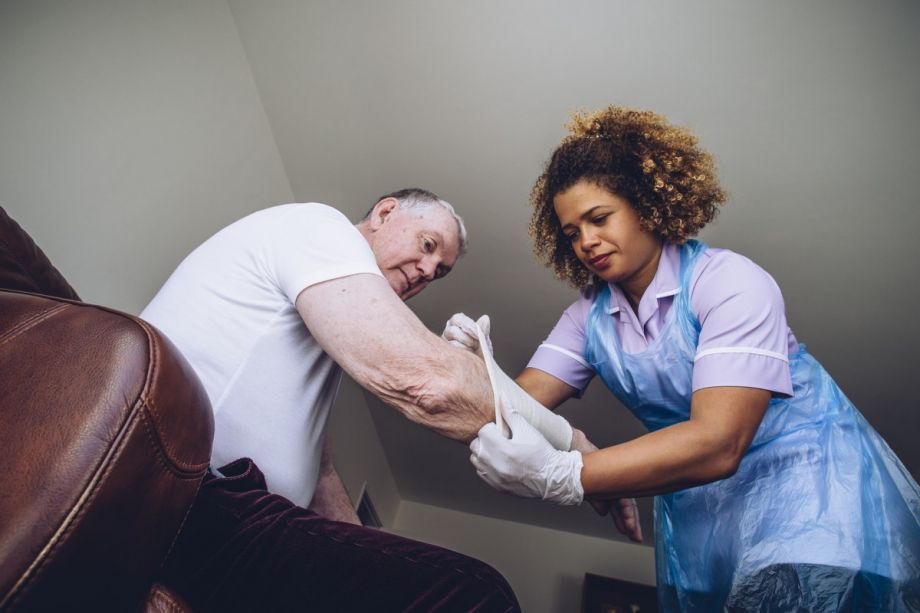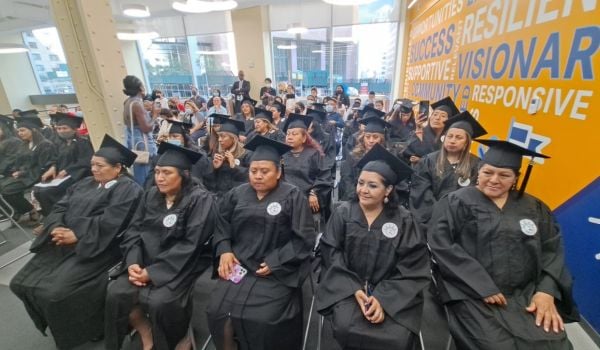Tens of Thousands of Nurses to Go on Strike
On Sept. 1, 15,000 nurses announced they would go on strike, after months of failed negotiations between employers and members of the Minnesota Nurses Association. The strike is the largest nurses’ strike in U.S. history and affected more than a dozen hospitals, according to the Minnesota Reformer.
Union nurses are demanding a 30% increase to pay and benefits, an offer countered by hospital administrators with a 10% increase over three years. The offer, hospital officials say, would be the largest raise for nurses in over 15 years. Finding themselves at an impasse, the union announced a Sept. 12 strike.
Meanwhile, on the West Coast, 22,000 nurses who work for Kaiser facilities staged a strike on Sept. 1, marking the first day of the end of their contract, KALW reports. The picketing nurses, who are part of California Nurses Association/National Nurses United (CNA/NNU), are demanding that Kaiser meet the minimum staffing guidelines and provide both safer patient care as well as health and safety provisions for nurses.
These two large nurses’ strikes are not isolated incidents. Spotlight Pennsylvania reports that nursing home nurses represented by SEIU Healthcare Pennsylvania are planning to strike if their demands for higher wages and better benefits in order to retain workers are not met. On Sept. 6, University of Wisconsin nurses also announced their plans for a 3-day strike for better working conditions, ABC-WISN reports.
Who Deserves Welfare? White Americans’ Answers Depend on Race
A new study from the National Bureau of Economic Research suggests that white Americans are less likely to support welfare if they believe more Black people are receiving it. Though this conclusion has been drawn from many observational studies, this study implements randomized inference.
In one finding, white participants estimated that about 38% of welfare recipients were Black. Black respondents estimated that the number at 35%. In actuality, about 21% of welfare recipients are Black.
Researchers also found that simply asking white participants to think about the racial composition of welfare recipients makes them less supportive of welfare policies. Meanwhile, Black recipients generally did not significantly account for race when forming an opinion around welfare.
Even seeing factual data around welfare, the study showed, did not do much to sway white participants. Authors say this last finding adds to a body of research examining whether more factual information — especially information related to race — can shift attitudes toward labor discrimination or other related policy debates.
New York Farm Labor Wage Board Recommends Lowering Overtime Threshold
On Sept. 6, New York State Farm Labor Wage Board recommended that the New York Labor Department lower the threshold for farmworkers to earn overtime pay from 60 hours to 40 hours, Documented reports. Currently, farmworkers do not earn overtime pay until they hit the 60-hour weekly mark.
In 1935, a sweeping set of labor laws passed under the National Labor Relations Act helped protect millions of American laborers’ right to unionize in the face of the Great Depression. Collective bargaining could help laborers earn higher wages and also better working conditions. But domestic workers and farm workers were excluded from this historic movement.
Nearly a century later, the state of New York has tried to expand who is included within their own labor laws. Many of the policies the state still operates on are a carbon copy of the Jim Crow-era law. The first major change was in 2019, under the Farm Laborers Fair Labor Practices Act, which finally allowed farm workers to unionize. Last year, the state saw its first farmworkers union, formed by workers at Long Island’s Pindar Vineyards, as reported by the Suffolk Times.
With the Farm Labor Wage Board’s recommendation, the next major change could come soon. While the Labor Board has 45 days to change or outright reject the policy, the recommendation has drawn criticism from growers and politicians from both sides of the aisle, per WXHC’s analysis. Many growers noted that the pandemic has already increased the costs of operating. Critics also cited a study by Cornell University Agricultural Economist Chris Wolf, which found that a majority of farmworkers would leave the state for other seasonal work if their hours were cut.
This article is part of The Bottom Line, a series exploring scalable solutions for problems related to affordability, inclusive economic growth and access to capital. Click here to subscribe to our Bottom Line newsletter.

Marielle Argueza is Next City’s Equitable Cities Reporting Fellow for Racial Justice Narratives in partnership with Triad City Beat in Greensboro, North Carolina. Formerly Next City's INN/Columbia Journalism School intern for Summer-Fall 2022, she’s a journalist with more than a decade of experience reporting on education, immigration, labor, criminal justice, climate and more. Her work in K-12 education is award-winning and she was recognized multiple times by the California News Publishers Association. She is a recent graduate of Columbia Journalism School, where she was Toni Stabile Investigative Fellow. Her work includes a story on Harlem’s last assisted-living facility for people living with HIV/AIDS; a profile on New York State’s first Farmers Union; and a database of deaths within the Milwaukee County Jail. She is also a recipient of other fellowships and scholarships from several notable organizations within the news industry including the Asian American Journalists Association, Association of Alternative Newsmedia, ProPublica, and the Journalism and Women Symposium.


















